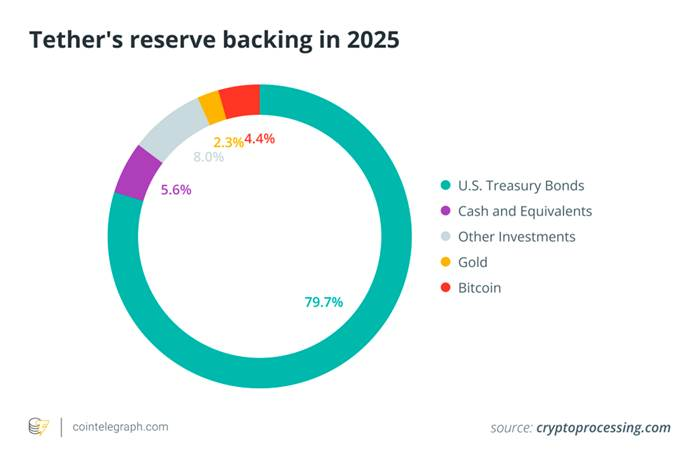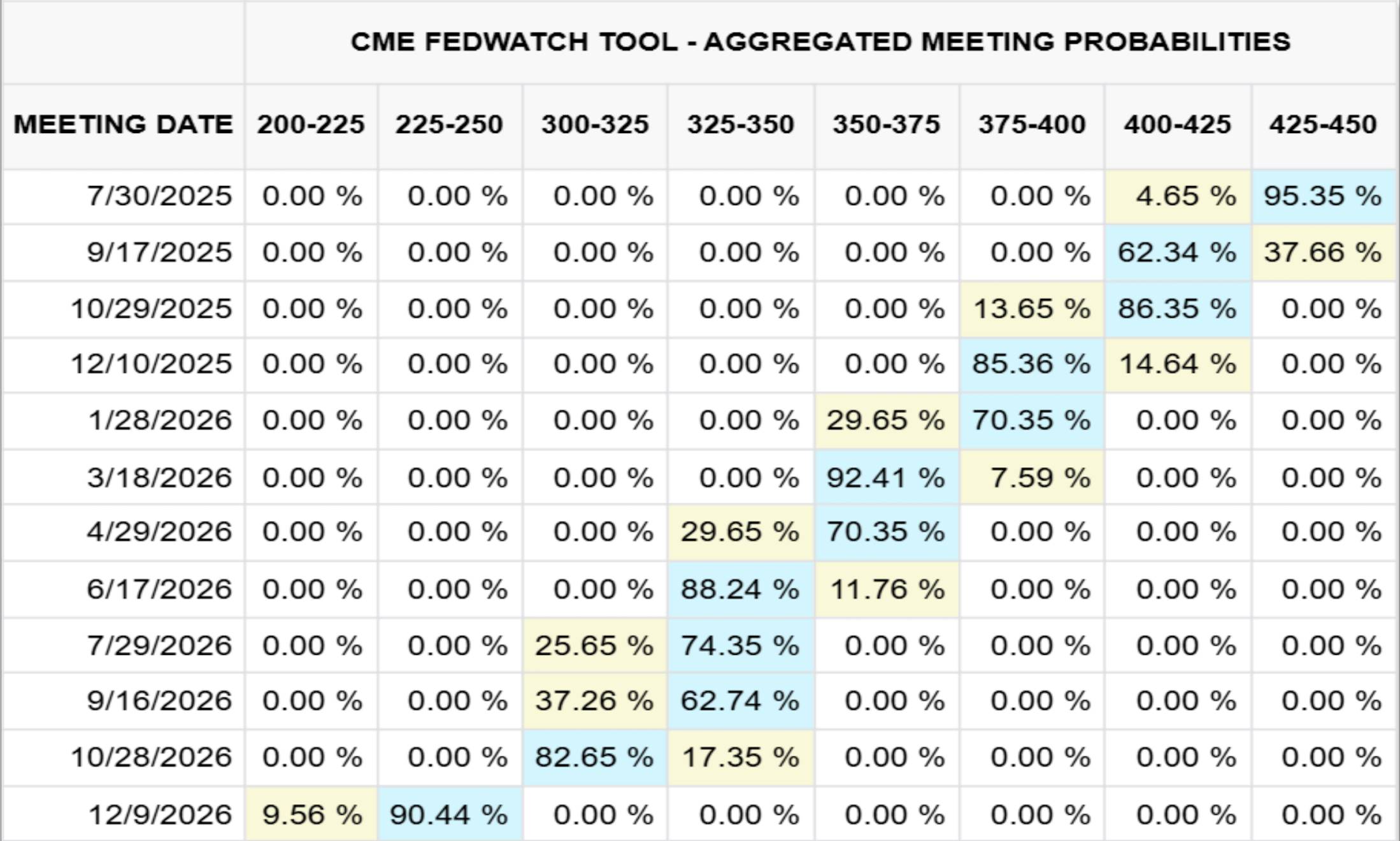This article focuses on fiat-collateralized US dollar stablecoins, adopting a global perspective to explore how the Federal Reserve's interest rate cycle and other potential risks will reshape the industry landscape.
Written by: 0xYYcn Yiran, Bitfox Research
The market size and importance of stablecoins continue to surge, driven by the enthusiasm of the cryptocurrency market and the expansion of mainstream application scenarios. By mid-2025, the total market capitalization has surpassed $250 billion, growing over 22% since the beginning of the year. A Morgan Stanley report indicates that these dollar-pegged tokens currently have a daily trading volume exceeding $100 billion, driving a total on-chain transaction volume of up to $27.6 trillion in 2024. According to Nasdaq data, this trading scale has surpassed the combined total of Visa and Mastercard. However, behind this prosperous scene lies a series of hidden dangers, particularly the close ties between the issuers' business models, the stability of their tokens, and changes in U.S. interest rates. As the Federal Open Market Committee (FOMC) approaches its next decision, this study focuses on fiat-collateralized US dollar stablecoins (such as USDT and USDC), exploring how the Federal Reserve's interest rate cycle and other potential risks will reshape the industry landscape.
Stablecoin 101: Growing Amidst Hype and Regulation
Definition of Stablecoins:
Stablecoins are a type of cryptocurrency designed to maintain a constant value, with each token typically pegged to the U.S. dollar at a 1:1 ratio. Their value stabilization mechanisms are primarily achieved through two methods: backing by sufficient reserve assets (such as cash and short-term securities) or relying on specific algorithms to regulate token supply. Fiat-collateralized stablecoins, represented by Tether (USDT) and Circle (USDC), provide full collateral backing for each unit of token issued by holding cash and short-term securities. This collateral mechanism is central to their price stability. According to data from the Atlantic Council, approximately 99% of the circulating supply of stablecoins is dominated by dollar-pegged types.
Industry Significance and Current Status:
By 2025, stablecoins are breaking out of the confines of the cryptocurrency realm and accelerating their integration into mainstream finance and business scenarios. International payment giant Visa has launched a platform supporting banks to issue stablecoins, Stripe has integrated stablecoin payment functionality, and Amazon and Walmart are also brewing their own stablecoins. Meanwhile, a global regulatory framework is taking shape. In June 2025, the U.S. Senate passed the landmark "Stablecoin Payment Clarity Act" (GENIUS Act), becoming the first federal-level stablecoin regulatory law; its core requirements include that issuers must maintain a stable 1:1 support ratio with high-quality liquid assets (cash or short-term government bonds maturing within three months) and clearly define the rights and protections for token holders. In the transatlantic European market, the "Markets in Crypto-Assets" (MiCA) framework implements stricter regulations, granting authorities the power to restrict the circulation of non-euro stablecoins when they threaten the monetary stability of the eurozone. On the market level, stablecoins are showing strong growth momentum: as of June 2025, their total circulating value has exceeded $255 billion. Citigroup predicts that this market size is expected to surge to $1.6 trillion by 2030, achieving nearly sevenfold growth. This clearly indicates that stablecoins are moving towards mainstream adoption, but their rapid growth also brings new risks and frictions.

Figure 1: Comparison of Ethereum Stablecoin Adoption and Market Activity Analysis (Past 30 Days)
Fiat-Supported Stablecoins and Interest Rate Sensitivity Models
Unlike traditional bank deposits that yield interest for customers, stablecoin holders typically do not enjoy any returns. According to the "Stablecoin Payment Clarity Act" (GENIUS Act), the user account balances of fiat-collateralized US dollar stablecoins are explicitly set to a non-interest-bearing state (0%). This regulatory arrangement allows issuers to retain all earnings generated from reserve investments. In the current high-interest-rate environment, this mechanism has prompted companies like Tether and Circle to transform into high-profit entities. However, this model also exposes them to extreme vulnerability during interest rate down cycles.
Reserve Investment Structure:
To ensure liquidity and maintain the pegged value of stablecoins, major issuers allocate the majority of their reserves to short-term U.S. Treasury bills and other short-term financial instruments. As of early 2025, Tether held U.S. government debt amounting to $113 billion to $120 billion, accounting for about 80% of its total reserves, making it one of the top 20 holders of U.S. Treasury bonds globally. The following chart illustrates the detailed composition of Tether's reserve assets, clearly indicating its high concentration in government bonds and cash-like assets, with other securities, gold, and non-traditional assets like Bitcoin occupying a significantly lower proportion in the asset mix.

Figure 2. Composition of Tether's Reserve Assets in 2025 (primarily U.S. Treasury bills), reflecting the high dependence of fiat-supported stablecoins on interest-bearing government assets.
High-quality reserve assets not only help maintain the pegged value and enhance user confidence but also generate substantial interest income—the lifeline of the current stablecoin business model. Between 2022 and 2023, the Federal Reserve's aggressive interest rate hikes pushed the yields on short-term Treasury bills and bank deposit rates to multi-year highs, directly amplifying the investment returns of stablecoin reserves. For example, in Circle's disclosed financial report, out of a total revenue of $1.68 billion in 2024, as much as $1.67 billion (99%) came from interest income on reserve assets. On the other hand, according to Techxplore, Tether's reported profit in 2024 reached $13 billion, rivaling or surpassing the profit scale of top Wall Street banks like Goldman Sachs. Such profit levels (generated by Tether's operational team of about 100 people) particularly highlight the strong boosting effect of the high-interest-rate environment on the income of stablecoin issuers. Essentially, stablecoin issuers operate a high-return "carry trade," allocating user funds to government bond assets yielding over 5% and fully capturing that interest spread due to users accepting a zero-interest rate. This creates vulnerability to interest rate fluctuations.
Interest Rate Volatility Risk Exposure
The revenue model of stablecoin issuers is highly sensitive to changes in Federal Reserve interest rates. For instance, a mere 50 basis point rate cut (0.50%) could lead to a sharp decline of about $600 million in Tether's annual interest income. As warned by Nasdaq analysis firms: "Over-reliance on interest income will put issuers like Circle in a vulnerable position during a rate-cutting cycle."
The following Figure 3 shows the Federal Funds Rate curve based on market expectations from the Chicago Mercantile Exchange (CME) as of July 23, 2025 (forecasting until the end of 2026); Figure 4 illustrates the impact mechanism of interest rate changes on Circle's reserve income through quantitative analysis at the million-dollar level.

Figure 3. Federal Funds Rate Outlook for December 2026 (CME, 2025/07/23)

Figure 4. Sensitivity of Circle's Reserve Income to Interest Rate Changes
For example, in 2024, Circle's reserve asset interest income reached $1.67 billion, accounting for 99% of its total revenue ($1.68 billion). Based on the CME data model (as of July 23, 2025), if the Federal Funds Rate falls to the range of 2.25%–2.50% in December 2026 (with a probability of about 90%), Circle is expected to lose about $882 million in interest income, exceeding 50% of its related revenue total for 2024. To fill this income gap, the company must achieve a doubling of its USDC stablecoin circulation supply by the end of 2026.
Other Core Risks Beyond Interest Rates: Multiple Challenges in the Stablecoin System
Although interest rate dynamics occupy a central position in the stablecoin industry, there are still various other key risks and challenges within the system. In the context of optimistic industry expectations, it is essential to systematically summarize these risk factors to provide a calm and comprehensive analysis:
Regulatory and Legal Uncertainty
Stablecoin operations are currently subject to fragmented regulatory frameworks such as the U.S. "Stablecoin Payment Clarity Act" (GENIUS Act) and the EU's "Markets in Crypto-Assets" (MiCA). While this framework grants legitimacy to some issuers, it also brings high compliance costs and sudden market entry restrictions. Regulatory agencies may impose enforcement actions for insufficient transparency of reserves, evasion of sanctions (e.g., Tether's involvement in billions of dollars of transactions in sanctioned regions), or violations of consumer rights, which can quickly lead to the suspension of redemption functions for specific stablecoins or their exclusion from core markets.
Banking Cooperation and Liquidity Concentration Risks
Fiat-collateralized stablecoins' reserve custody and fiat channels (deposit/withdrawal) services heavily rely on a limited number of partner banks. A sudden crisis at a partner bank (such as the collapse of Silicon Valley Bank, which led to the freezing of $3.3 billion in USDC reserves) or a large-scale concentrated redemption wave can quickly deplete bank deposit reserves, triggering token decoupling and threatening the liquidity stability of the broader banking system when wholesale redemption pressures breach bank cash buffers.
Peg Stability and Decoupling Risks
Even when claiming full collateralization, stablecoins may still experience, and have actually experienced, peg mechanism collapses when market confidence wavers (e.g., in March 2023, concerns over reserve asset accessibility caused USDC's price to plummet to $0.88). The robustness curve of algorithmic stablecoins is even steeper, with the collapse of TerraUSD (UST) in 2022 providing a significant example of this.
Transparency and Counterparty Risks
Users rely on the reserve proof reports (Attestations) published by issuers (usually quarterly) to assess the authenticity and liquidity of assets. However, the lack of comprehensive public audits raises doubts about credibility. Whether it is cash held in banks, shares in money market funds, or assets from repurchase agreements, reserve assets carry counterparty risk and credit risk, which can significantly impair redemption guarantees under stress scenarios.
Operational and Technical Security Risks
Centralized stablecoins can freeze or seize tokens in response to attacks, but this also introduces single-point governance risks; DeFi versions are vulnerable to threats such as smart contract vulnerabilities, cross-chain bridge attacks, and hacks of custodial institutions. Additionally, user errors, phishing, and the irreversibility of blockchain transactions pose daily security challenges for token holders.
Macroeconomic Financial Stability Risks
Hundreds of billions of dollars in stablecoin reserves are concentrated in the short-term U.S. Treasury market, and large-scale redemption activities will directly affect the demand structure and yield volatility of Treasury bonds. Extreme outflow scenarios could trigger panic selling (fire-sales) in the Treasury market; meanwhile, the widespread dollarization of stablecoins may weaken the transmission effectiveness of the Federal Reserve's monetary policy, further accelerating the development of a U.S. central bank digital currency (CBDC) or the establishment of stricter regulatory barriers.
Conclusion
As the next Federal Open Market Committee (FOMC) meeting approaches, although the market generally expects interest rates to remain unchanged, the upcoming meeting minutes and forward guidance will become the focus of attention. The significant growth of fiat-collateralized stablecoins such as USDT and USDC masks the inherent nature of their business model being deeply tied to changes in U.S. interest rates. Looking ahead, even a modest rate cut (e.g., 25-50 basis points) could erode hundreds of millions in interest income, forcing issuers to reassess growth paths or to maintain market adoption rates by passing on some of the earnings to token holders.
In addition to interest rate sensitivity, stablecoins must also contend with an evolving regulatory environment, banking and liquidity concentration risks, challenges to peg integrity, and operational risks ranging from smart contract vulnerabilities to insufficient reserve transparency. Crucially, as these tokens become systematically important holders of short-term U.S. Treasury bonds, their redemption activities may impact the pricing mechanisms of global bond markets and disrupt the transmission pathways of monetary policy effectiveness.
免责声明:本文章仅代表作者个人观点,不代表本平台的立场和观点。本文章仅供信息分享,不构成对任何人的任何投资建议。用户与作者之间的任何争议,与本平台无关。如网页中刊载的文章或图片涉及侵权,请提供相关的权利证明和身份证明发送邮件到support@aicoin.com,本平台相关工作人员将会进行核查。




